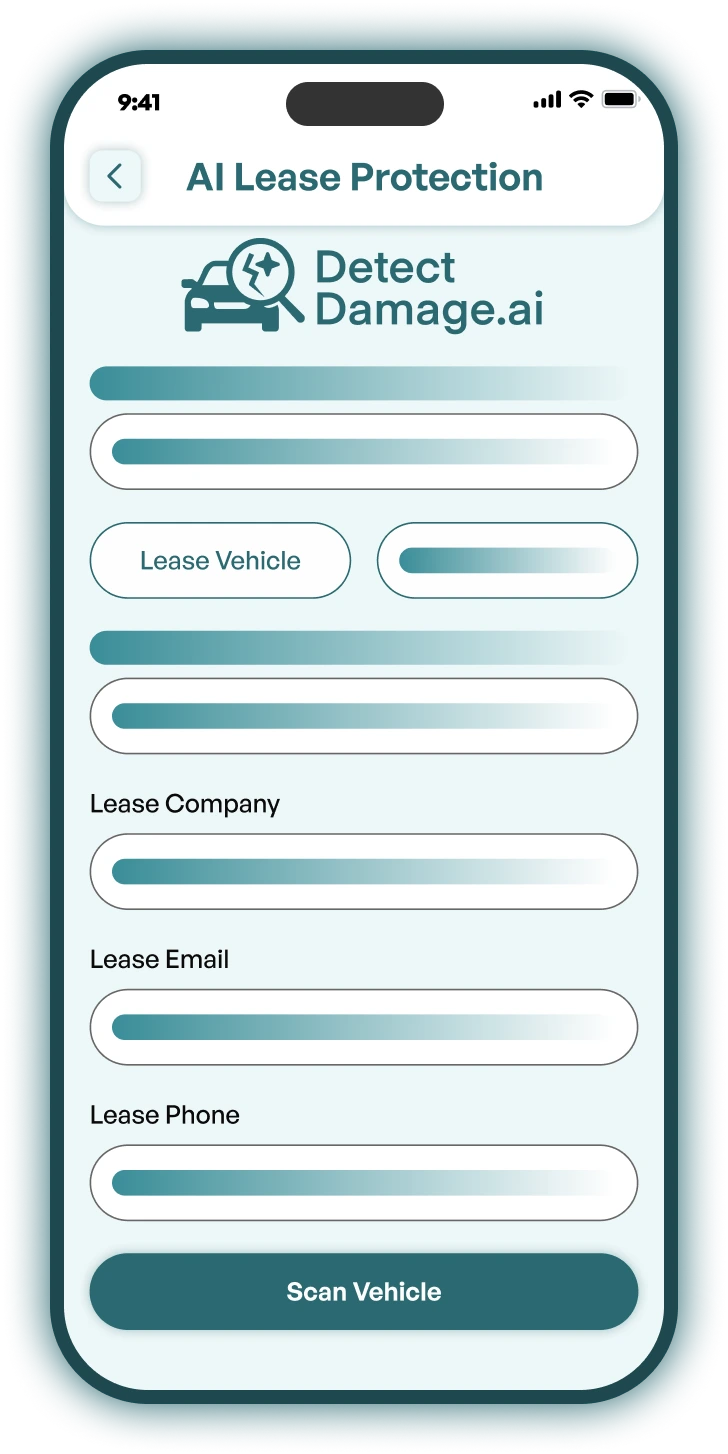When returning a leased car what should I check for?
When returning a leased car, you should prepare by cleaning the vehicle, documenting its condition, addressing wear and tear, and ensuring all required documents and items are present. It's also crucial to understand the collection procedures and potentially arrange a pre-lease return inspection to address any damage.

Use Detectdamage.ai to assess the vehicle’s condition before returning it. This powerful tool quickly and accurately identifies any bodywork issues, helping you avoid costly end-of-lease penalties and negotiate confidently with your leasing provider.

Here's a more detailed breakdown:
1. Preparation
- Clean the vehicle: Thoroughly clean the interior and exterior of the car, including vacuuming, washing, and removing any personal belongings.
- Check for damage: Carefully inspect the car for any damage, inside and out, including scratches, dents, and any issues with the interior.
- Address wear and tear: Familiarize yourself with the leasing company's fair wear and tear guidelines to understand what is considered acceptable and what might incur charges.
- Gather necessary documents: Ensure you have all required documents, such as the service handbook, owner's manual, and any other relevant paperwork.
- Remove personal belongings: Take all your personal items out of the car, including any accessories or equipment that were not part of the original lease.
- Top up the fuel: If possible, return the car with a full tank of fuel.
- Check tyres and spare wheel: Ensure the tyres are in good condition and that any spare wheel is present.
2. Collection and Inspection
- Arrange collection: Coordinate with the leasing company to schedule a convenient time and date for the car's collection.
- Be present at collection: If possible, be present during the inspection when the car is collected to ensure both parties agree on the vehicle's condition.
- Review the collection report: Carefully review the collection report and clarify any discrepancies or concerns with the representative.
- Document everything: Take photos of the car's condition at the time of collection, especially if you notice any existing damage.
3. Addressing Potential Issues
- Excess mileage: If you have exceeded the agreed-upon mileage, be prepared to pay for the extra mileage.
- Wear and tear: Understand that some wear and tear is expected, but excessive damage or neglect may result in charges.
- Damage: Be aware of potential charges for any damage beyond fair wear and tear, and consider getting an independent inspection if there's a dispute.
- Service history: Ensure the car's service history matches the lease agreement and that all scheduled maintenance has been completed.
By following these steps, you can ensure a smooth and hassle-free return of your leased vehicle.
Frequently Asked Questions
What to do next?
What to do next?
What to do next?
What to do next?
